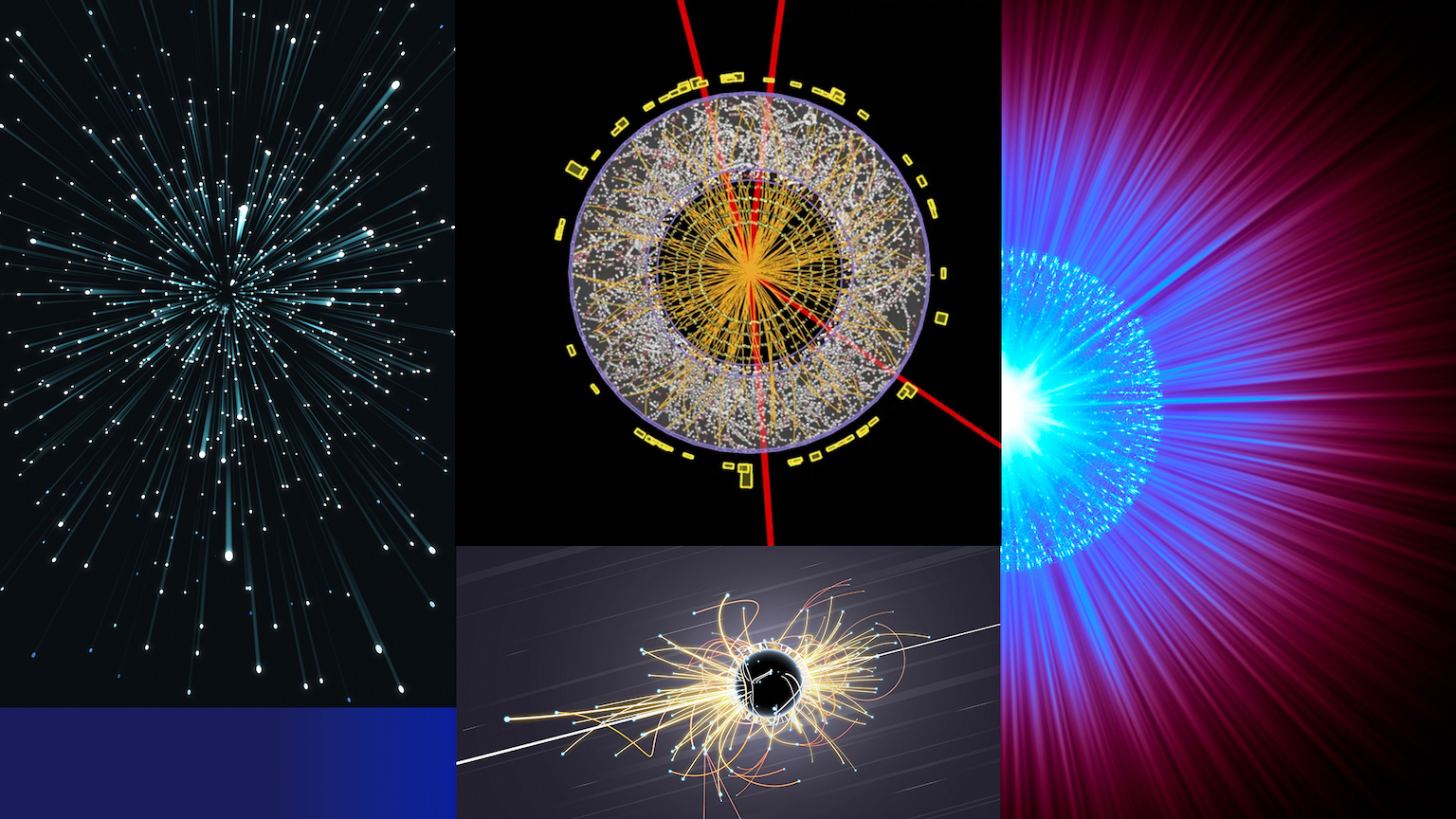Symmetry is beautiful, but asymmetry is why the Universe and life exist

- Theoretical physicists are enamored with symmetry, and many believe that equations should reflect this beauty.
- Mathematical equations built around symmetry correctly predicted the existence of anti-matter.
- But there is danger in equating truth and beauty with symmetry. Neither living organisms nor the Universe itself is perfectly symmetrical.
We left-handed people are a minority among humans, roughly a 1:10 ratio. But make no mistake: the Universe loves left-handedness, from subatomic particles to life itself. In fact, without this fundamental asymmetry in Nature, the Universe would be a very different place — bland, mostly filled with radiation, and without stars, planets, or life. Still, there is a prevalent aesthetic in the physical sciences that pushes for mathematical perfection — expressed as symmetry — as the blueprint for Nature. And, as is often the case, we get lost in a falsely fabricated duality of having to choose camps: are you for “all is symmetry” or are you an imperfection iconoclast? (The interested reader can check my book about this, where I cover a lot of what follows.)
Antimatter: why physicists love symmetry
We all love Keats’ famous line, “Beauty is truth, truth beauty.” But if you insist in equating Keats’ beauty with mathematical symmetry as a path toward finding the “truth” about natural laws — something that is quite common in theoretical physics — the danger is that you relate symmetry with “truth” in such a way that the mathematics we use to represent the Universe through physics should reflect mathematical symmetry: the Universe is beautifully symmetric, and the equations we use to describe it must reveal this beautiful symmetry. Only then we can approach the truth.
Quoting the great physicist Paul Dirac, “It is more important to have beauty in one’s equation than to have them fit experiment.” If any other less known physicist said that, they would probably be ridiculed by colleagues, considered a crypto-religious Platonist, or a quack. But that was Dirac, and his beautiful equation, built upon symmetry concepts, did predict the existence of anti-matter, the fact that every particle of matter (like electrons and quarks) has a companion anti-particle. That’s a truly amazing accomplishment — the mathematics of symmetry, applied to an equation, guided humans to discover a whole parallel realm of matter. No wonder Dirac was so devoted to the god of symmetry. It guided his thought toward an amazing discovery.
Note that antimatter doesn’t mean anything as eccentric as it seems. Anti-particles do not go up in a gravitational field. They have a few of their physical properties reversed, most notably electric charge. So, the anti-particle of the negatively charged electron, called the positron, has a positive electric charge.
We owe our existence to asymmetry
But here is the problem that Dirac didn’t know about. The laws that dictate the behavior of the fundamental particles of Nature predict that matter and anti-matter should be equally abundant, that is, that they should appear in a 1:1 ratio. For each electron, one positron. However, if this perfect symmetry prevailed, fractions of a second after the Big Bang, matter and antimatter should have annihilated into radiation (mostly photons). But that’s not what happened. About one in a billion (roughly) particles of matter survived as an excess. And that’s good, because everything that we see in the Universe — the galaxies and their stars, the planets and their moons, life on Earth, every kind of matter clump, living and nonliving — came from this tiny excess, this fundamental asymmetry between matter and antimatter.
Contrary to the expected symmetry and beauty of the cosmos, our work in the past decades has shown that the laws of Nature do not apply equally to matter and antimatter. What mechanism could have created this tiny excess, this imperfection that is ultimately responsible for our existence, is one of the greatest open questions in particle physics and cosmology.
In the language of internal (“internal” as in changing a property of a particle) and external (“external” like a rotation of an object) symmetries, there exists an internal symmetry operation that changes a particle of matter into one of antimatter. The operation is called “charge conjugation” and is represented by the capital letter C. The observed matter-antimatter asymmetry implies that Nature does not display charge-conjugation symmetry: in some cases, particles and their antiparticles cannot be turned into one another. Specifically, C-symmetry is violated in the weak interactions, the force responsible for radioactive decay. The culprits are the neutrinos, the strangest of all known particles, affectionately called ghost particles due to their ability to go through matter practically undisturbed. (There are about one trillion neutrinos per second coming from the Sun and going through you right now.)
To see why C-symmetry is violated by neutrinos, we need one more internal symmetry called parity, represented by the letter P. A “parity operation” turns an object into its mirror image. For example, you are not parity-invariant. Your mirror image has the heart on the right side. For particles, parity is related to how they spin, like tops. But particles are quantum objects. This means they cannot just spin with any amount of rotation. Their spin is “quantized,” meaning they can only spin in a few ways, kind of like old-fashioned vinyl records that could be played in only three speeds: 33, 45, and 78 rpm. The smallest amount of spin a particle can have is one rotation “speed.” (Very roughly, it’s like a top rotating straight up. Seen from above, it could turn either clockwise or counterclockwise.) Electrons, quarks, and neutrinos are like that. We say they have spin 1/2, and it can either be +1/2 or -1/2, the two options corresponding to the two rotation directions. A nice way to see this is to curl your right hand around with your thumb pointing up. Counterclockwise is positive spin; clockwise is negative spin.
Applying the C operation on a left-handed neutrino, we should get a left-handed anti-neutrino. (Yes, even if the neutrino is electrically neutral, it does have its anti-particle, also electrically neutral.) The problem is, there are no left-handed anti-neutrinos in Nature. There are only left-handed neutrinos. The weak interactions, the only interactions neutrinos feel (apart from gravity), violate charge conjugation symmetry. That’s trouble for the symmetry lovers.
CP violation: asymmetry wins
But let’s go one step further. If we apply both C and P (parity) to a left-handed neutrino, we should get a right-handed anti-neutrino: the C flips the neutrino into an anti-neutrino, and the P flips left-handed into right-handed. And yes, anti-neutrinos are right-handed! We seem to be in luck. The weak interactions violate C and P separately but apparently satisfy the combined CP symmetry operation. In practice, this means that reactions involving left-handed particles should occur at the same rate as reactions involving right-handed anti-particles. Everyone was relieved. There was hope that Nature was CP-symmetric in all known interactions. Beauty was back.
The excitement didn’t last long. In 1964, James Cronin and Val Fitch discovered a small violation of the combined CP-symmetry in the decays of a particle called neutral kaon, represented as K0. Essentially, K0 and their anti-particles don’t decay at the same rate as a CP-symmetric theory predicts they should. The physics community was shocked. Beauty was gone. Again. And it has never recovered. CP violation is a fact of Nature.
So many asymmetries
CP violation has an even deeper and more mysterious implication: particles also pick a preferred direction of time. The asymmetry of time, the trademark of an expanding Universe, happens also at the microscopic level! This is huge. So huge, in fact, that it deserves its own essay soon.
And here is another explosive fact about imperfection that we will address. Life is also “handed”: the amino acids and sugars inside of all living creatures from amoebae to grapes to crocodiles to people are left- and right-handed, respectively. In the lab, we make 50:50 mixtures of left-handed and right-handed molecules, but that is not what we see in Nature. Life prefers, almost exclusively, left-handed amino acids and right-handed sugars. Again, this is a huge open scientific question, one that I spent quite some time working on. Let’s go there next time.





